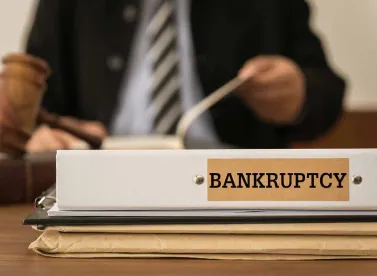Though bankruptcy filings are down in 2021, the expiration of the Paycheck Protection Program and reopening of the courts nationwide could lead to a rise in bankruptcy filings with many businesses still struggling to cope with the economic and supply chain aftereffects of the pandemic and consumer purchasing habits. These bankruptcies, in turn, will have an inevitable ripple effect on creditors and other claimants, whose abilities to collect on claims and exercise rights, are significantly restricted by the automatic stay. Generally, the automatic stay requires a party seeking relief against a debtor to do so in, and only in, the bankruptcy court, which can provide the relief sought or grant permission to pursue claims and rights in another venue. For many businesses, considerations regarding the automatic stay end there, believing so long as they were deliberate enough to seek relief in the bankruptcy court, they will not face the potentially harsh consequences of violating the automatic stay. But, a recent decision in In re Roman Catholic Church of the Archdiocese of Santa Fe serves as the latest reminder that very rarely can one be too careful when seeking relief against a debtor, even in the bankruptcy court itself.
In this decision, the United States Bankruptcy Court for the District of New Mexico, joined a minority of courts that hold the automatic stay applies to proceedings seeking relief against the debtor based on state-law, prepetition claims even when initiated in the bankruptcy court itself.[1] Under this minority view, creditors and other claimants may only initiate an adversary proceeding in the bankruptcy court without first obtaining relief from the automatic stay if the underlying claim for relief exists solely by virtue of the Bankruptcy Code (e.g., an action to determine the dischargeability of a debt,[2] a motion to convert a reorganization to a liquidation,[3] a motion to seek relief from the automatic stay)—even if the Bankruptcy Code permits the claim to be filed in the bankruptcy case and provides specific procedures for doing so (e,g., an adversary proceeding seeking injunctive relief). Upon adopting this minority position, the court dismissed an individual-creditor’s motion for injunctive relief because it was based on his state-law defamation claims.
More specifically, in the Roman Catholic Church of the Archdiocese of Santa Fe case, prior to the debtor’s (a church) commencement of its bankruptcy case, the debtor had published a list of “priests, deacons, and religious [persons]” who were accused of child molestation, which listed the creditor as one of the accused. In an effort to be removed from the list, the creditor filed a state court lawsuit, asserting claims for defamation and seeking monetary damages. Upon filing the bankruptcy, the automatic stay froze the creditor’s state court action and the creditor filed a proof of claim for the monetary damages sought in the prepetition state court case as well as a standalone motion for equitable relief in the bankruptcy court, seeking to compel the church to remove his name from the list.[4] Avoiding the merits of the creditor’s motion, the Roman Catholic Church of the Archdiocese of Santa Fe court found the creditor’s commencement of a proceeding for injunctive relief violated the automatic stay and was therefore void. In voiding the motion, however, the court left open the option for the creditor to move for relief from the stay to commence an adversary proceeding or remove his state-court case and amend it to add a claim for equitable relief.
Though the Roman Catholic Church of the Archdiocese of Santa Fe court ultimately did not dismiss the creditor’s claim for injunctive relief with prejudice, it further specified that even if the creditor were to request and obtain relief from the automatic stay to remove the state-court action, only a claim for equitable relief would be permitted to move forward as an adversary proceeding; the creditor’s state-law damages claims, i.e., the bases for his proof of claim, would continue to be stayed until the “point in the case where claims administration is appropriate,” since it did not make sense to adjudicate the creditor’s claim out of order.[5] Other courts that have applied the automatic stay to actions brought in the bankruptcy court have reached similar results, preventing creditors from using claims for injunctive relief as a means to backdoor an earlier adjudication of their contingent or unliquidated monetary claims.[6]
Taking a step back, the automatic stay generally precludes creditors and claimants from commencing or continuing litigation against the debtor or its assets based on a claim that arose before the debtor filed for bankruptcy (i.e., a prepetition claim), enforcing or perfecting a prepetition judgment or lien, foreclosing on collateral, terminating contracts because of prepetition defaults, or taking other actions against property of the debtor’s bankruptcy estate.[7] Its purpose is to provide the debtor a respite from creditors’ collection efforts, ensure equal treatment of similarly situated creditors by preventing them from racing to the courts and obtaining a de facto first-come, first-served administration of the bankruptcy estate, and provide for an orderly administration and distribution of estate assets.[8]
When applied literally, the automatic stay could prohibit the commencement of proceedings against the debtor even in the bankruptcy court, but a majority of courts have held otherwise, finding such a literal application would lead to absurd results. After all, having to ask the bankruptcy court for relief (from the stay) to ask the bankruptcy court for relief (from the debtor) is redundant—like having to both raise your hand to ask a question and then, when called on, request permission to ask the question before asking the actual question. Thus, a majority of courts have instead limited application of the automatic stay to actions, claims or rights asserted outside of the bankruptcy court, finding this policy consistent with the penultimate goal of the automatic stay: ensuring an orderly administration of the estate and equal treatment of similarly situated creditors.[9]
What does this all mean for businesses in bankruptcy or those asserting claims against them? As an initial matter, it means “does the automatic stay apply?” is an important question. To answer it requires parties to know who is presiding over a case and not just the district it is in, as bankruptcy judges within the same district have adopted different views on the application of the automatic stay.[10] And for creditors or other claimants, Roman Catholic Church of the Archdiocese of Santa Fe court’s decision serves as another stark reminder to proceed with great caution when seeking relief against a debtor in bankruptcy, lest you run afoul of the automatic stay and suffer sanctions or even the loss of your claim entirely.
For debtors, it means an occasional layer of additional protection if they find themselves before a court who has adopted the minority view, and all the potential benefits that accompany the extension of the automatic stay, including, potentially, obtaining an award of sanctions against hasty and aggressive creditors and possibly even dismissal of a claim without having to reach the merits. Moreover, if in a bankruptcy court that has not yet determined the issue, invoking the automatic stay becomes a valuable tool of debtors to pursue their plan of reorganization or liquidation.
To sum this all up in one, Peter-Pipery sentence: Even in bankruptcy court, creditors may need to seek relief to seek relief, and when they fail to seek the relief they needed to seek relief, a debtor may seek relief from the relief the creditor sought.
FOOTNOTES
[1] In re Roman Catholic Church of the Archdiocese of Santa Fe, Case No. 18-13027-t11, Doc. No. 696 (D.N.M. May 13, 2021) (citing Bridges v. Continental AFA Dispensing Co. (In re Continental AFA Dispensing Co.), 403 B.R. 653, 659 (Bankr. E.D. Mo. 2009); Healy/Mellon-Stuart Co. v. Coastal Group, Inc. (In re Coastal Group, Inc.), 100 B.R. 177, 178 (Bankr. D. Del. 1989); In re Hodges, 83 B.R. 25, 26 (Bankr. N.D. Cal. 1988); In re Penney, 76 B.R. 160, 161 (Bankr. N.D. Cal. 1987)); but see Prewitt v. North Coast Village, Ltd., 135 B.R. 641, 644 (B.A.P. 9th Cir. 1992) (explaining In re Penney did not hold the automatic stay applied to the adversary complaint, but rather, the adversary complaint at issue there was simply so meritless as to warrant dismissal and sanctions).
[2] See e.g., In re Deerman, 482 B.R. 344, 354-55 (Bankr. D.N.M. 2012); In re Hodges, 83 B.R. 25, 26 (Bankr. N.D. Cal. 1988).
[3] See e.g., United States v. Inslaw, Inc., 932 F.2d 1467, 1474 (D.C. Cir. 1991).
[4] In re Roman Catholic Church of the Archdiocese of Santa Fe, Case No. 18-13027-t11, Doc. No. 696 (D.N.M. May 13, 2021), at 1-3.
[5] Id., at 9.
[6] See e.g., Healy/Mellon-Stuart Co. v. Coastal Group, Inc. (In re Coastal Group, Inc.), 100 B.R. 177, 178 (Bankr. D. Del. 1989) (holding a creditor’s filing of an adversary proceeding to be in violation of the automatic stay because the claims were “based on the identical transactions and allegations underlying its complaint”).
[7] 11 U.S.C. § 362.
[8] Matter of Cowin, 864 F.3d 344, 352 (5th Cir. 2017) (citations omitted).
[9] See, e.g., In re North Coast Village, Ltd., 135 B.R. 641, 643 (9th Cir. BAP 1992); In re Transcolor Corp., 296 B.R. 343, 358 (Bankr. D. Md. 2003); In re Uni-Marts, LLC, 404 B.R. 767, 783 (Bankr. D. Del. 2009) (collecting cases); see also In re Miller, 397 F.3d 726, 730 (9th Cir. 2005); In re Cashco, 599 B.R. 138, 146 (Bankr. D.N.M. 2019); In re Bird, 229 B.R. 90, 95 (S.D.N.Y. 1999)).
[10] Compare, e.g., In re Roman Catholic Church of the Archdiocese of Santa Fe, Case No. 18-13027-t11, Doc. No. 696 (D.N.M. May 13, 2021) with In re Cashco, 599 B.R. 138, (D.N.M. 2019) (holding the “automatic stay does not apply to the commencement of an adversary proceeding in the bankruptcy court,” reasoning that a “literal, overbroad application of the automatic stay to matters raised in the bankruptcy case itself would not serve the purposes underlying the automatic stay, would be illogical and unworkable, would frustrate the orderly administration of the bankruptcy case, and would lead to results demonstrably at odds with the intentions of the drafters”).



 />i
/>i
